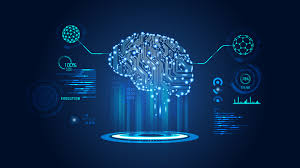Every company wants to implement AI in its operations. It is a way to improve overall operations, automate the time-consuming aspects while saving a lot of money on personnel. Why hire 20 people to do something they would hate to do when 1 person can run the AI application. But let’s look at 2 specific aspects of AI today, Predictive Analysis and Machine Learning. A true AI would need to seamlessly integrate both of them but when business people say ‘AI’ they actually mean the small aspects of it, not the technology as a whole.
Predictive Analysis
Analyzing a large volume of historical data for discernible patterns and connections, although this is a fundamental part of AI development now, it began far earlier. Mathematician Alan Turing implemented it to decode German encryptions during the 2nd world war. The biggest benefit of predictive analysis is convenience as the amount of data that can be analyzed with today’s computing power is truly vast saving countless lifetimes of hours that an office worker would’ve wasted. It is very commonly used in Big Data Analysis.
Machine Learning
Machine learning makes use of algorithms to process data without predetermined rules. The algorithms allow the processing applications to run without telling them how to run it. This allows the application to make assumptions, errors, and test them autonomously. The algorithm is made to understand positive and negative feedback through observations and real-time interactions. This technology is very close to true AI-like behavior than other applications due to the autonomy of the system. It is far more efficient than a normal human’s learning process as dozens of scenarios are tested and accepted or rejected in a matter of seconds. Some Machine Learning algorithms can run thousands of years of applications in a few day’s time and learn real information. Most times its things people already know but it is always useful.
Both of these are different in how they operate but currently operate on the same basic principle, you input data and receive useful output. To decide which one to use where is simple, first decide on the type of data that can be used. A real-time data set like forum comments or employee satisfaction requires a machine learning algorithm. If you’re focused on historical data like the market performance of specific products then the predictive analysis is the way to go. Predictive Learning requires a far tighter ruleset than Machine Learning. Let’s look at a specific example for each.
Predictive analysis plays a pivotal role in fintech operations such as providing insight to revenue, market value, churn rate, and conversion rate.
Machine learning can analyze business assets and identify possible cybersecurity risks.
Both have their place in Business and entirely depend on the use case. Companies these days have to implement some form of AI to outperform or at least keep pace with their rivals. The scale at which it speeds up the menial tasks is truly remarkable.

